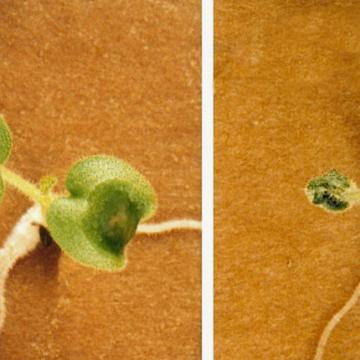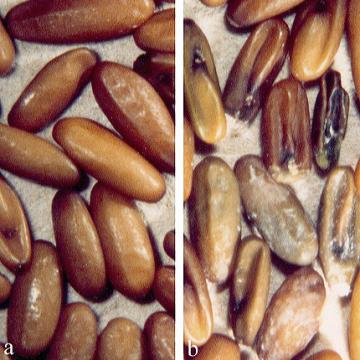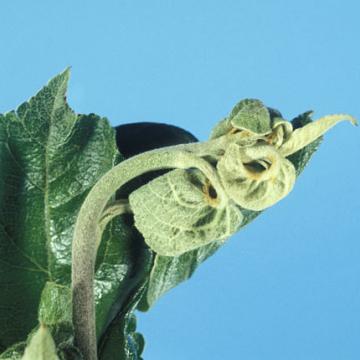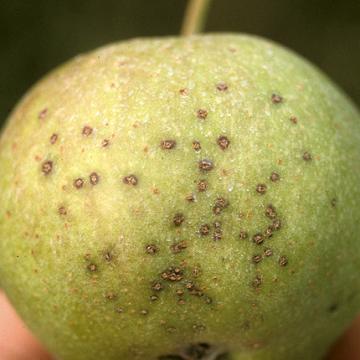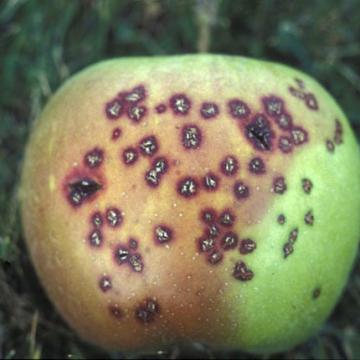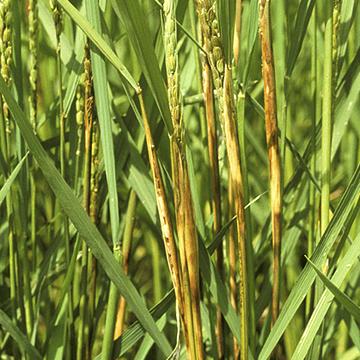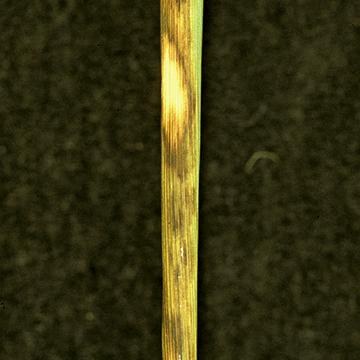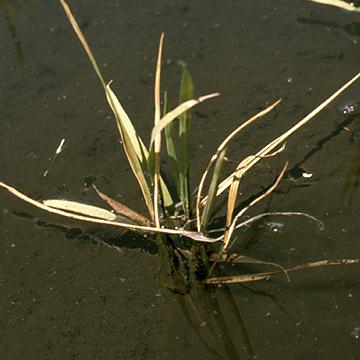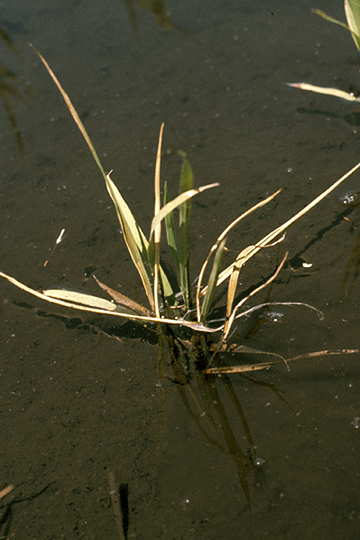DISEASE: Bacterial seed and seedling rot
HOST: Geranium
Cotyledons with water-soaked spots.
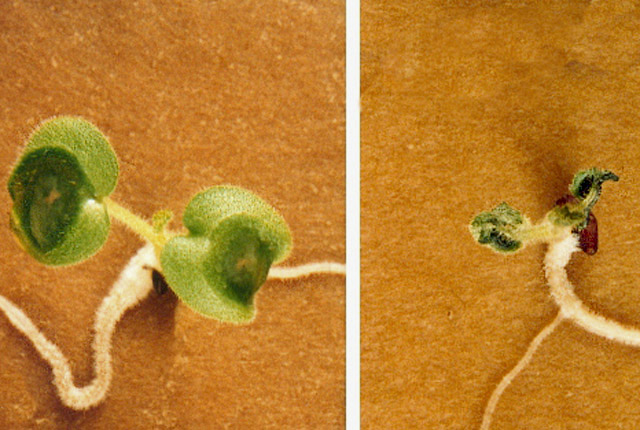
Bacterial seed and seedling rot | Geranium
DISEASE: Bacterial seed and seedling rot
HOST: Geranium (Pelargonium sp.)
PATHOGEN: Paenibacillus sp.
SOURCE: A. Magyarosy, D. Thomas
DISEASE: Bacterial seed and seedling rot
HOST: Geranium
Rotted and discolored seeds (right). Healthy seeds (left).
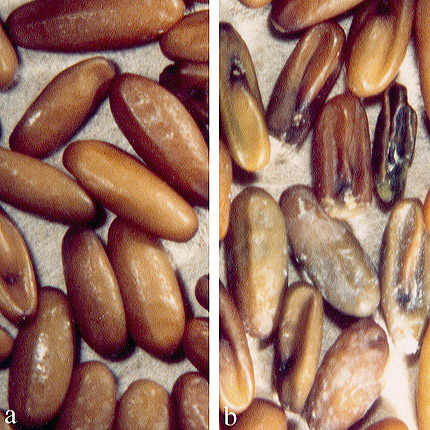
Bacterial seed and seedling rot | Geranium
DISEASE: Bacterial seed and seedling rot
HOST: Geranium (Pelargonium sp.)
PATHOGEN: Paenibacillus sp.
SOURCE: A. Magyarosy, D. Thomas
DISEASE: Blister spot
HOST: Apple
Fruit with water-soaked spots.
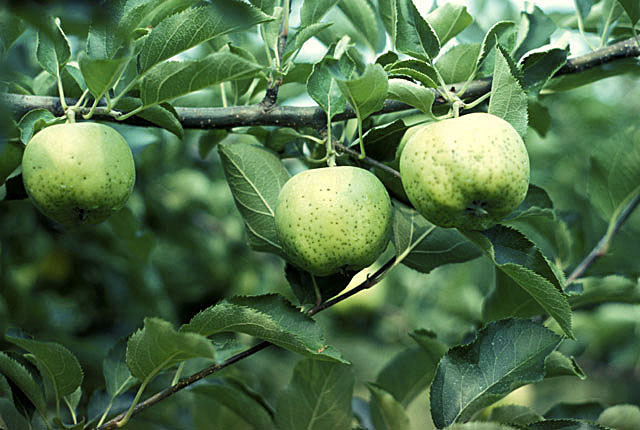
Blister spot | Apple
DISEASE: Blister spot
HOST: Apple (Malus domestica)
PATHOGEN: Pseudomonas syringae pv. papulans
SOURCE: T. Burr
DISEASE: Blister spot
HOST: Apple
Water-soaked blister spots on leaves of blighted twig.

Blister spot | Apple
DISEASE: Blister spot
HOST: Apple (Malus domestica)
PATHOGEN: Pseudomonas syringae pv. papulans
SOURCE: T. Burr
DISEASE: Blister spot
HOST: Apple
Apple with brownish blister spots.
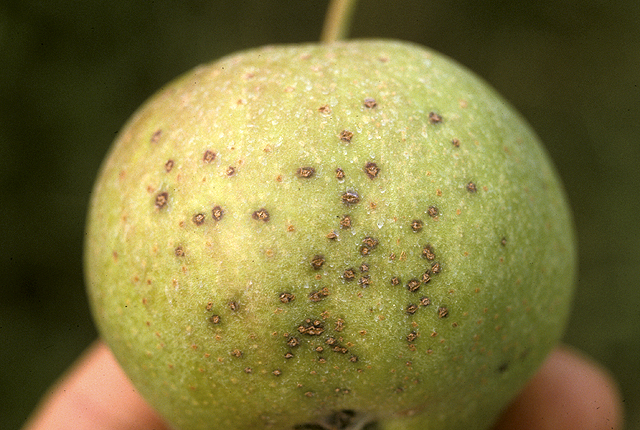
Blister spot | Apple
DISEASE: Blister spot
HOST: Apple (Malus domestica 'Mutsu')
PATHOGEN: Pseudomonas syringae pv. papulans
SOURCE: S. Thomson
DISEASE: Blister spot
HOST: Apple
Late stage of blister spot. The purplish black lesions are associated with lenticels and stomata.
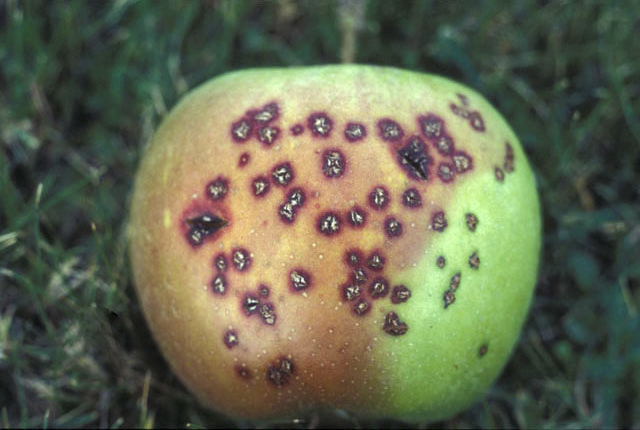
Blister spot | Apple
DISEASE: Blister spot
HOST: Apple (Malus domestica 'Crispin')
PATHOGEN: Pseudomonas syringae pv. papulans
SOURCE: T. Burr
DISEASE: Sheath brown rot
HOST: Rice
Disease symptoms typically occur on flag leaf sheaths from booting to heading stage and also on panicles. Water-soaked lesions on glumes turn light brown.
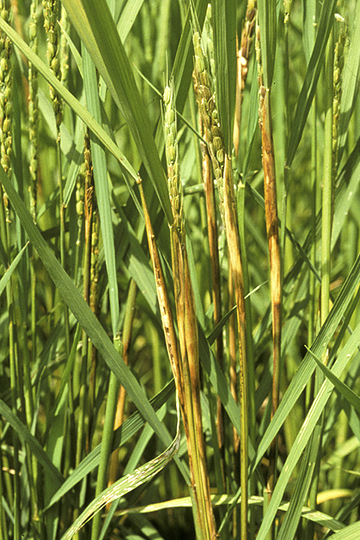
Sheath brown rot | Rice
DISEASE: Sheath brown rot
HOST: Rice (Oryza sativa)
PATHOGEN: Burkholderia fuscovaginae
PATHOGEN SYNONYM: Pseudomonas fuscovaginae
SOURCE: K. Miyajima, M. Goto
DISEASE: Sheath brown rot
HOST: Rice
Close-up of stem lesions.
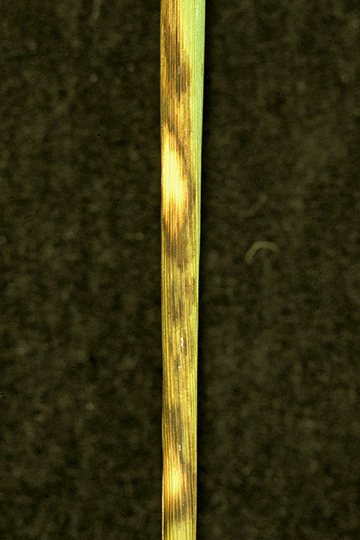
Sheath brown rot | Rice
DISEASE: Sheath brown rot
HOST: Rice (Oryza sativa)
PATHOGEN: Burkholderia fuscovaginae
PATHOGEN SYNONYM: Pseudomonas fuscovaginae
SOURCE: K. Miyajima, M. Goto


